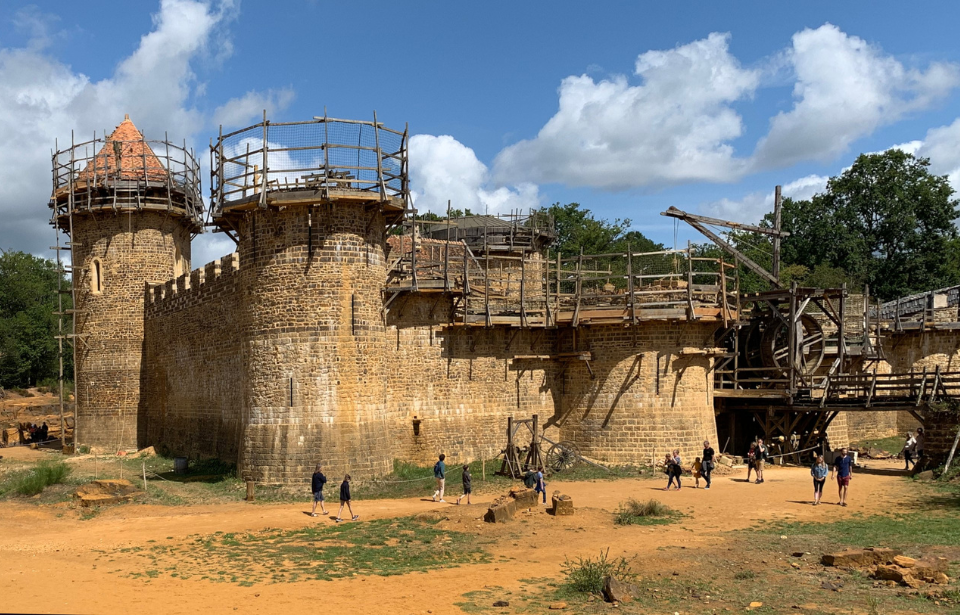In east-central France, merely two hours south of Paris by car, an extraordinary structure is under construction. Guédelon Castle is indeed a castle, as its name implies, but its unique approach sets it apart. This project has captured worldwide interest due to its use of centuries-old techniques, presenting both challenges and rewards.
Here’s how the project has advanced over time.
What is Guédelon Castle?
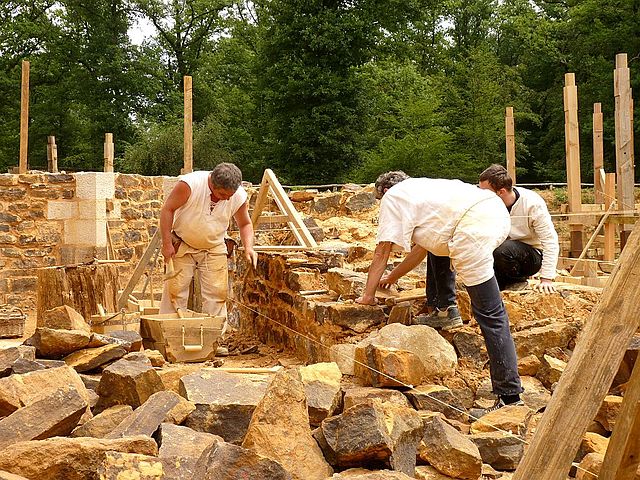
Guédelon Castle is a 13th-century medieval castle under construction in the woods near Treigny, in Burgundy, France. You might be wondering, how can a castle from the Middle Ages be built in the modern era? Well, that’s exactly what makes it so special.
The concept of Guédelon Castle dates back to 1979, when French entrepreneur Michael Guyot purchased what remained of an old château. While restoring the property, he was informed that the structure had been built atop medieval foundations, prompting him to switch gears and, instead, build a castle. After conversing with the French government and raising €400,000, he was able to begin work on the project in 1997.
Instead of approaching the effort from a modern lens, Guyot decided that Guédelon Castle would be built using only materials, techniques and tools that were accessible to those living in the Middle Ages. What’s more, he modeled it after those developed during the reign of Philip II, who ruled as the King of France from 1180-1223.
As of 2023, Guédelon Castle remains under construction. In 1998, it was opened to the public, who are free to visit the site, learn about historic building techniques and watch a piece of history being built right before their eyes. It’s typically open between April and November each year, and is said to attract 300,000 visitors annually.
2000
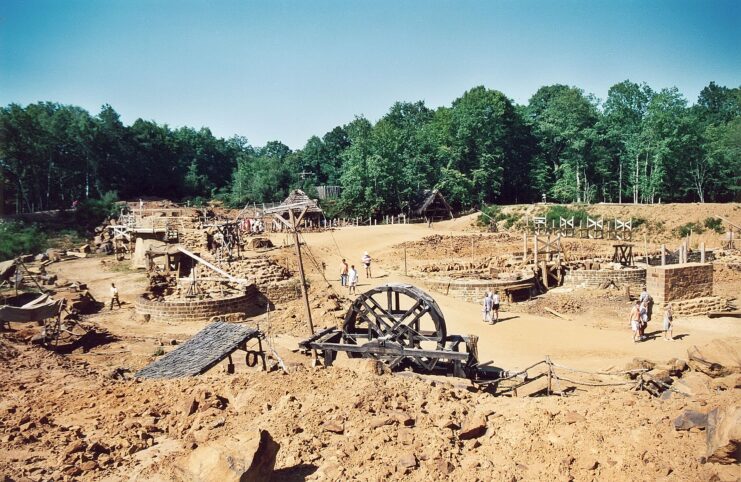
A host of individuals have been brought together to help construct Guédelon Castle, including stonemasons, quarrymen, tilers, carpenter-joiners, blacksmiths, rope makers and carters.
2002
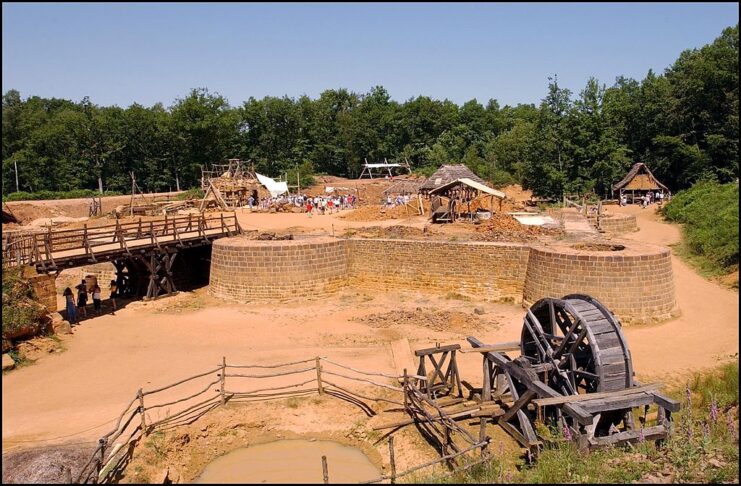
As with most construction projects, work occurs from spring to autumn in what’s described as an “open-air laboratory.” Their work is regularly observed by visitors to Guédelon Castle, who get to watch in real time how individuals from the Middle Ages constructed similar structures.
2004
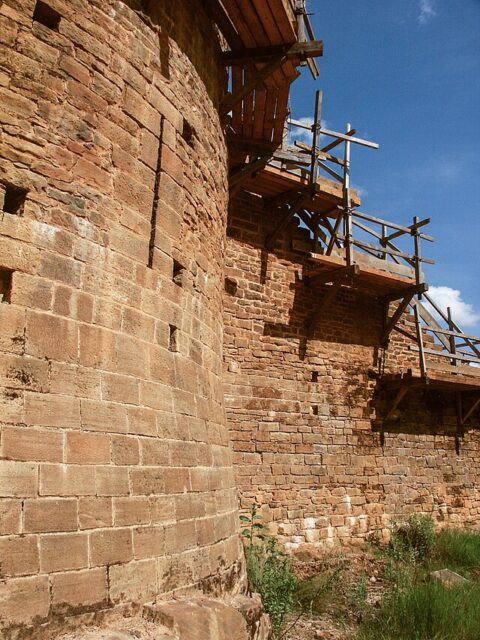
Speaking about the project back in 2003, Anne Baud, archaeologist and senior lecturer at Lyon University, said, “My normal work consists of carrying out research on existing ruins…In fact we mentally deconstruct the wall that we are studying. This can take us so far, but it remains an intellectual activity. Today, Guédelon is helping us put ideas and research to the test.”
2005
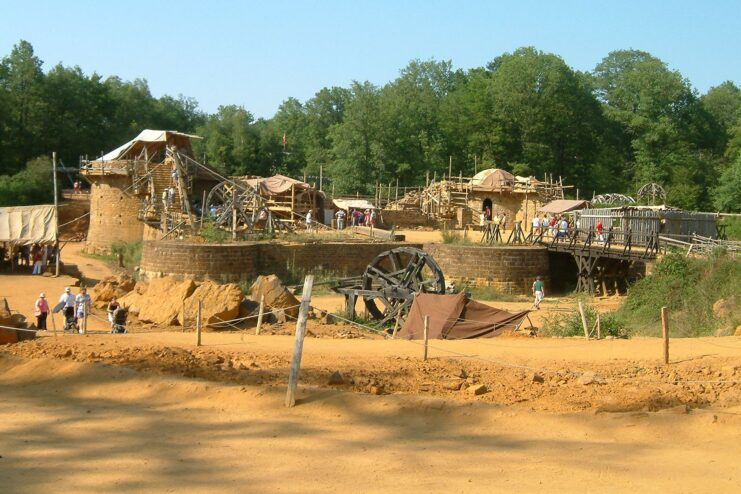
Guédelon Castle is being built in an abandoned quarry, as the location has ample amounts of unused stone and is close to a pond. The first ceremonial stone was laid on June 20, 1997, with construction properly getting underway just over a month later.
2006
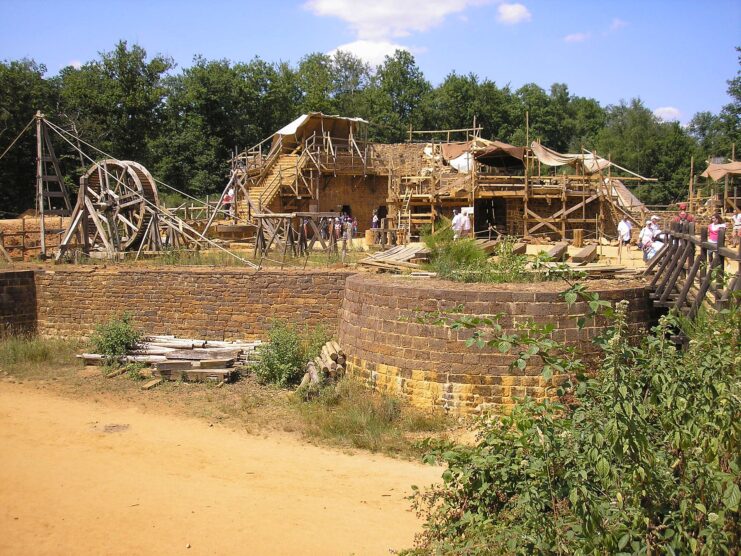
There’s another reason why Guédelon Castle was built in the abandoned quarry, and it relates back to the restraints of those living during the Middle Ages. Transporting construction supplies and materials was difficult and costly back then, so the abundance of rocks and other necessary items has meant the process has been infinitely easier than if the castle had been built elsewhere.
2007
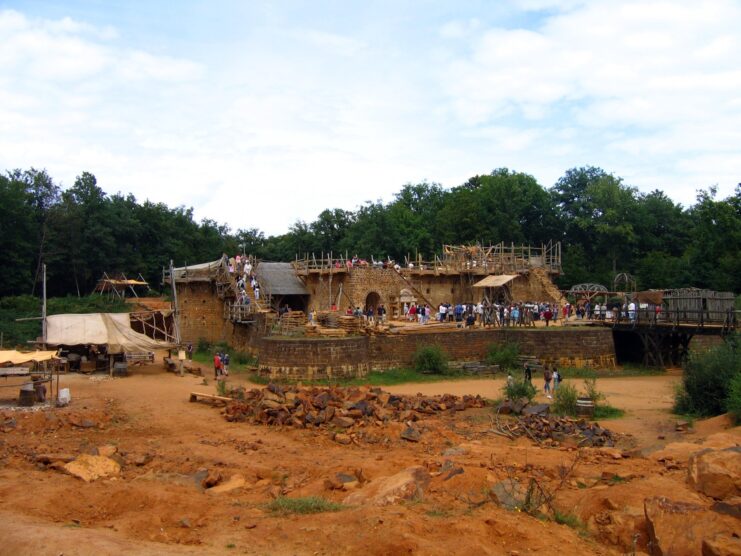
There’s something special about Guédelon Castle and the work going on there. Speaking with NPR, Sarah Preston, a guide and communications director, said, “This is a place you experience with all your senses. As soon as you walk onto the site you smell the woodsmoke. There’s something so evocative about these sites and sounds.”
2008
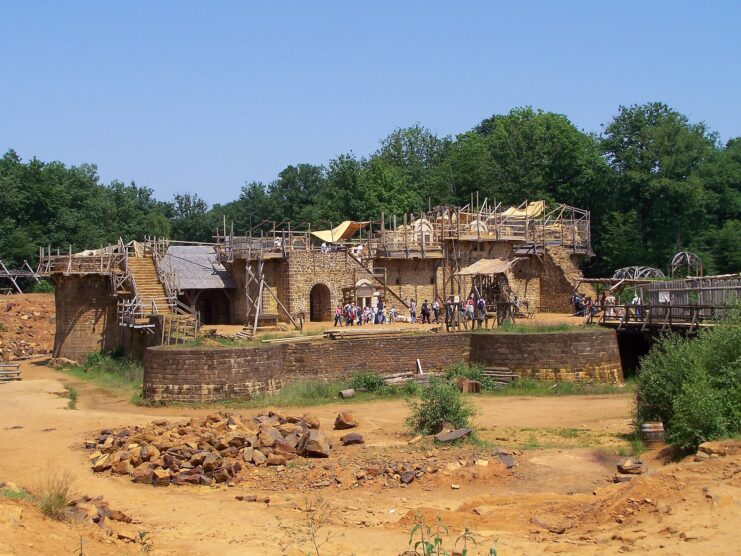
2009
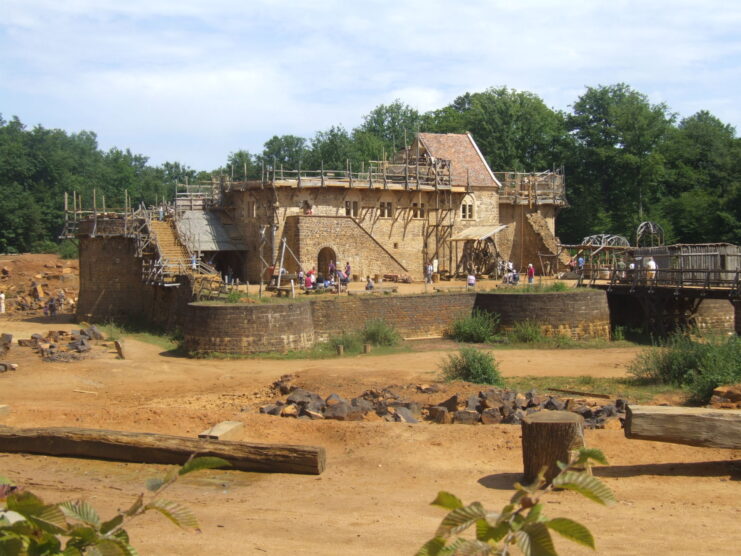
How does the team know the proper techniques to use? Well, they collected information from several sources, including field trips to and surveys of castles from the same time period; contemporary iconography, including illuminated manuscripts, medieval-era building contracts and stained-glass windows; and modern scientific sources, such as archaeological records.
2010
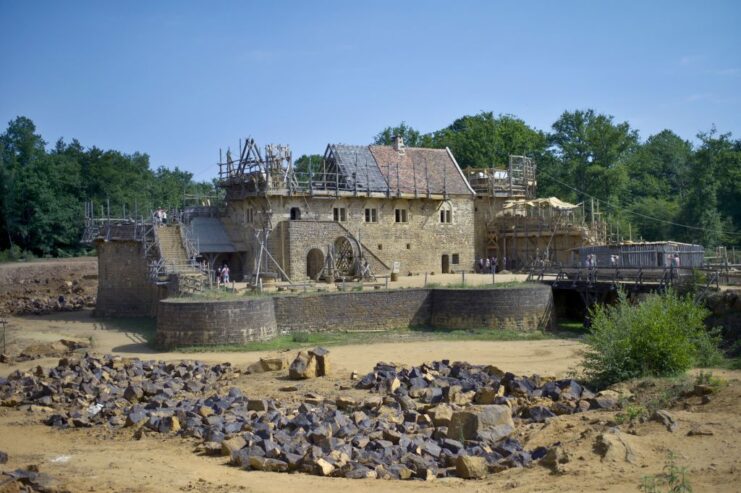
Along with offering numerous tourism opportunities, Guédelon Castle allows students to develop a new skill. Those looking for placements can apply and learn the likes of banker masonry, carpentry and fixer masonry. If physical labor isn’t your speed, the site also offers lessons on how to be a tour guide.
2011
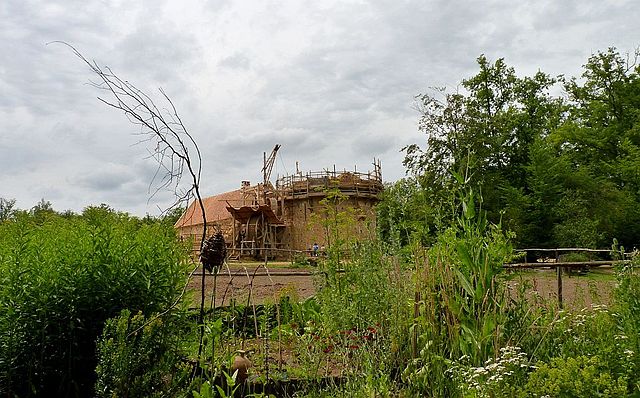
Speaking about the experience, head architect Jacques Moulin said, “The Guédelon building site has provided me with a unique experience in my role as head architect. If I want accurate restorations, I need to use building techniques which even specialized companies do not master. We are confronted by a paradox: rebuild the old with radically modern methods.”
2012
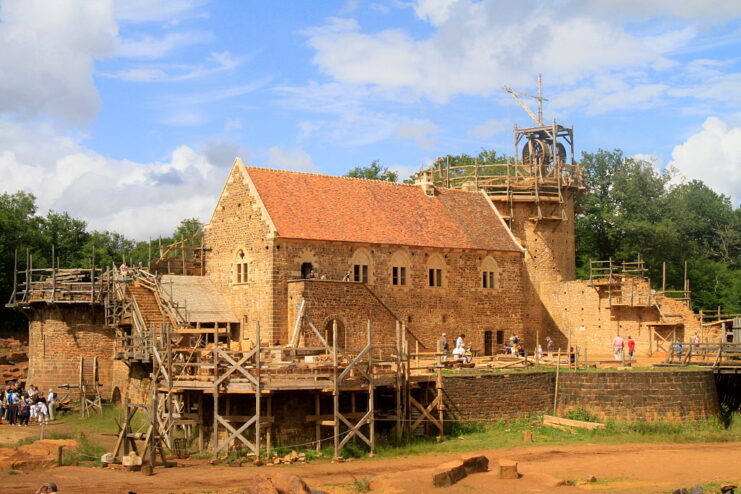
Guédelon Castle doesn’t just feature the main structure, but also a medieval hydraulic water mill. As with the rest of the property, it was constructed by the team’s carpenters, woodsmen, blacksmiths and stonemasons, who worked alongside archaeologists with the French National Institute for Preventative Archaeological Research (INRAP).
The mill itself is actually based upon the design of a water mill found at Thevray, in Jura, which was dated to the 12 century.
2013
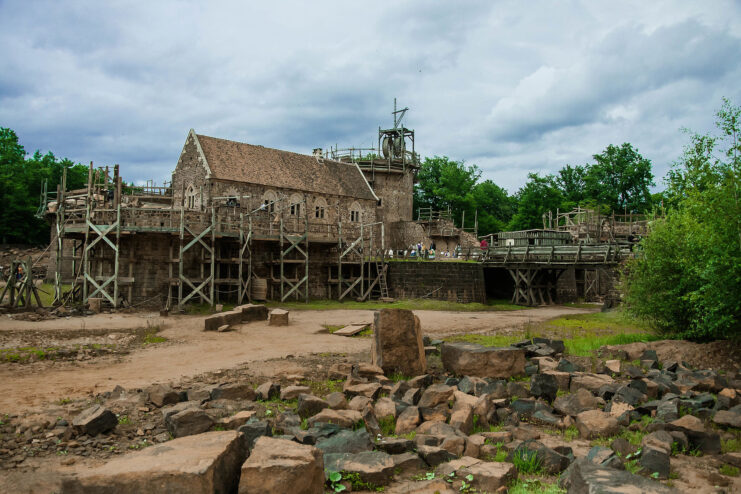
Want to experience the flavors of medieval times? Guédelon Castle has a resident baker who uses on-site milled flour to bake loaves in the castle’s bread oven.
2014
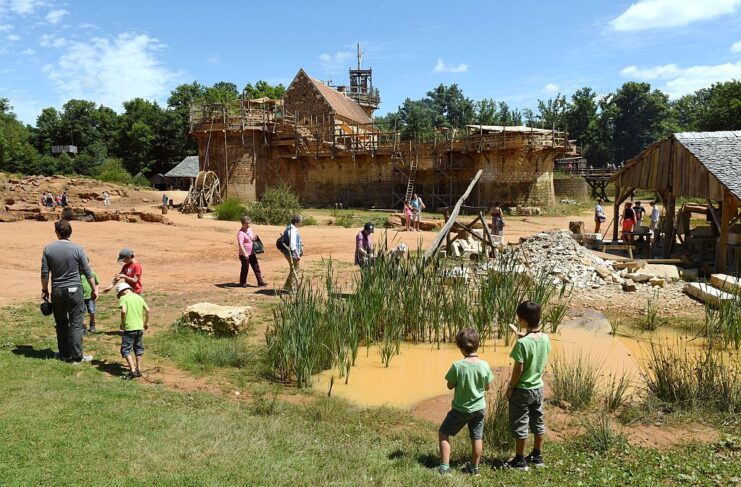
Interestingly, Guédelon Castle isn’t the only place where medieval building techniques are being used in France. The team tasked with restoring the Notre-Dame after the devastating 2019 fire have been using the methods honed by those involved in the castle’s construction.
2015
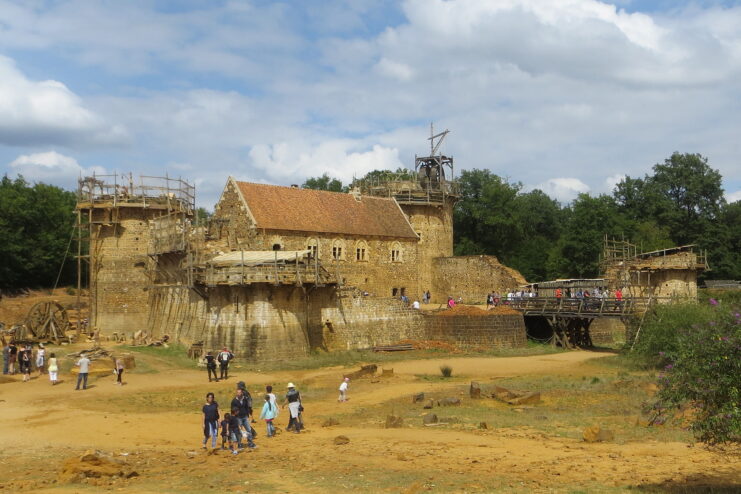
In 2014, Guédelon Castle was featured in the BBC Two documentary series, Secrets of the Castle. The show, hosted by Peter Ginn, Ruth Goodman and Tom Pinfold, called the project “the world’s biggest archaeological experiment.”
2016
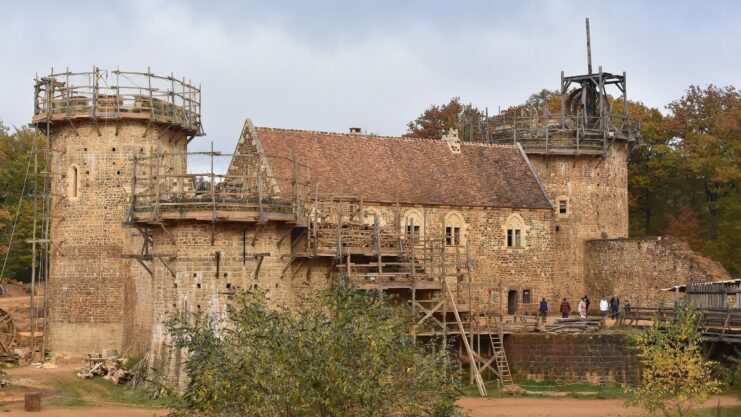
As can be expected, a number of historical artifacts have been unearthed during the construction process. Along with being interesting in and of themselves, these items provide an added look into the lives of those living in medieval Europe.
2017
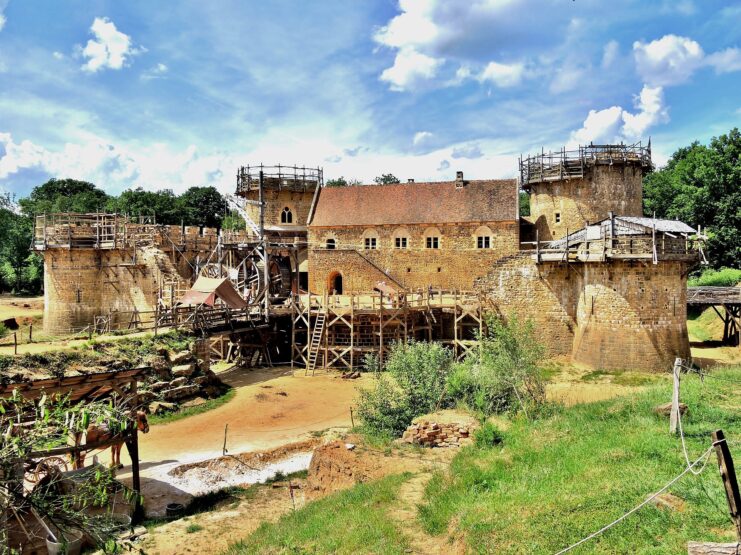
Did you know Guédelon Castle is home to a trebuchet? It’s true! The medieval weapon is essentially a large catapult and was used to launch large projectiles at enemy forces during a siege. Its origins date back to the 4th century BC in China.
2018
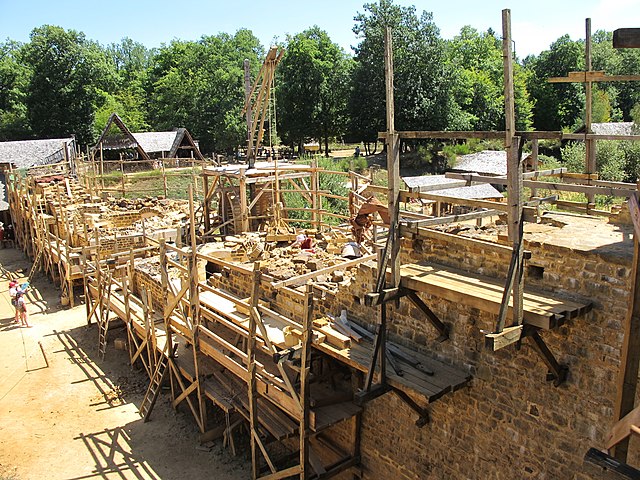
Just as interested parties can apply for placements at Guédelon Castle, visitors can also get involved! The site offers interactive workshops, meaning anyone who’s interested can get hands-on experience in the likes of carpentry and stone carving. It really offers a sense of just how different life was in the Middle Ages.
2019
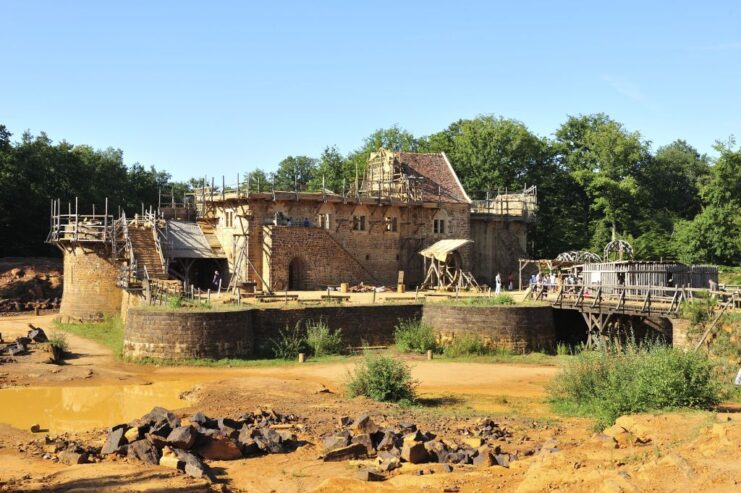
Along with solely using techniques that are true to the time period, those involved in constructing Guédelon Castle have put an emphasis on making sure the work being done is ecologically sound and sustainable.
2020
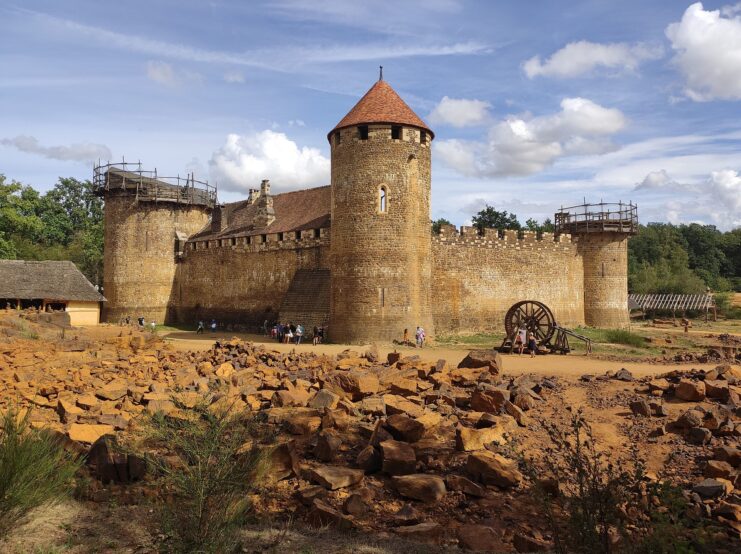
As hinted at by the on-site breadmaking, Guédelon Castle grows a lot of its own food. However, just as with the techniques, they are limited to growing foods that were accessible at the time. As reported by All That’s Interesting, that means they don’t grow tomatoes or potatoes, as both foods hadn’t yet introduced to Europe from South America in the 13th century.
2021
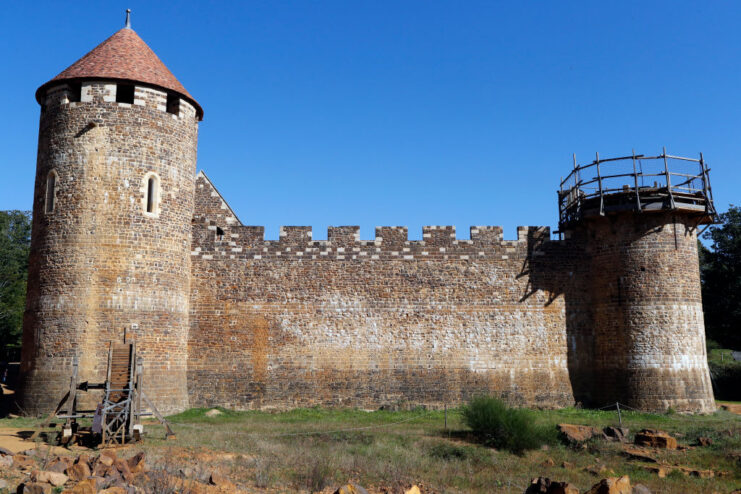
As aforementioned, Guédelon Castle is located a few hours south of Paris. There’s also no forms of public transportation that service the area, meaning anyone interested in visiting needs to acquire a car – but we promise the visit is well worth it!
2023
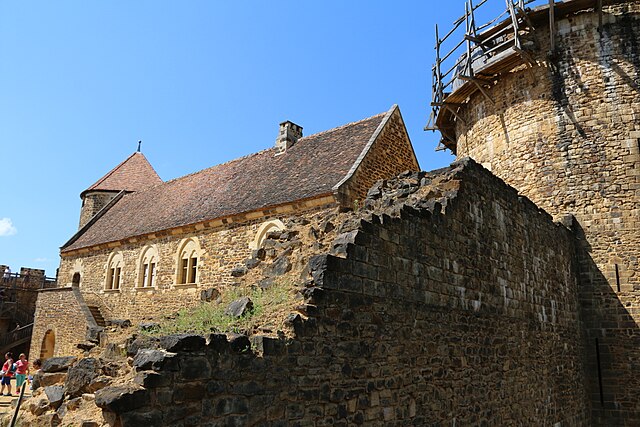
More from us: History of Malbork Castle: From the Teutonic Knights to the Second World War
Want to become a trivia master? Sign up for our War History Fact of the Day newsletter!
Overall, Guédelon Castle is a unique and interesting trip back in time, all while remaining in the modern era. If you’re ever in France and find yourself with a free day, it should definitely be among the sites you consider visiting.
